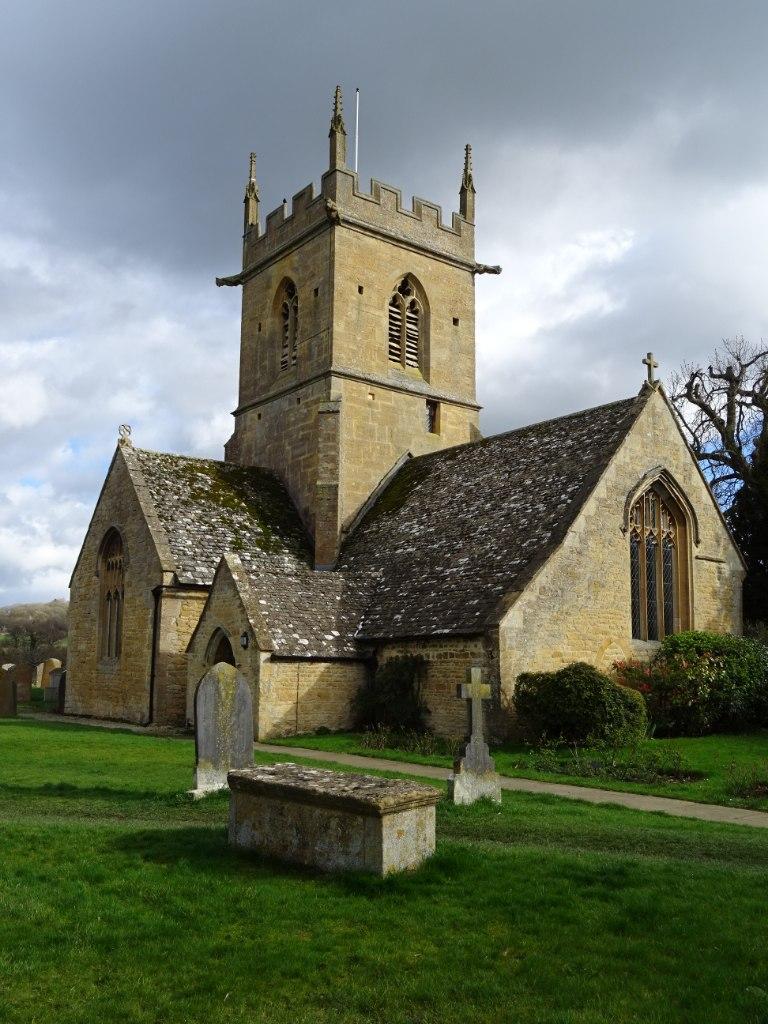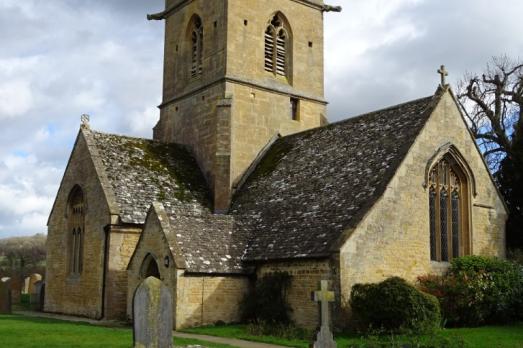Willersey used to be the summer residence for the Abbots of Evesham. They lived in the manor house and during the 14th and 15th centuries enlarged the church. They were responsible for its cruciform shape by adding the chancel and transepts and by building the magnificent central tower. It was Abbot Zattan (1379-1418) who designed the massive pillars which support the tower and these were smaller replicas of those in the centre of Evesham Abbey, which was destroyed during the Reformation.
On the tower, the battlements, crocketed pinnacles and immense gargoyles are magnificent examples of the early Perpendicular (1350-1500) style of architecture. The tower contains a peal of six bells (originally there were three). In 1712 the bells were melted down by the Gloucestershire firm of Abraham Rudhall, who recast them into a peal of six in time for them to be rung as an act of thanksgiving for the end of the War of the Spanish Succession. These bells are unique, being perfectly in tune but never having been tuned by milling or ‘chipping’.
The font predates the Norman Conquest and it is understood that it was hidden in the Rectory garden to avoid destruction of it by the Puritans (1648-1660). In the Vestry there is a tombstone inscribed with the name of Anthony Roper. He was a descendant of an Anthony Roper who was a landowner in the time of Elizabeth I (1558-1603) and son in law of Sir Thomas More.
Christian activity can be traced back to the 8th century, although the first recorded name of an Incumbent, Robert de Gloucester, does not appear until 1281. In the 8th century King Offa II of Mercia (757-796) gave, by Charter, to the Abbey of Evesham 'Seven Manses or farms in Willersei'; and Domesday book (1086) mentions a 'Priest with six Pow tillages' worth £4 annually at the time of Edward the Confessor (1042-1066) and 100 shillings at the time of the Norman survey (1086).


